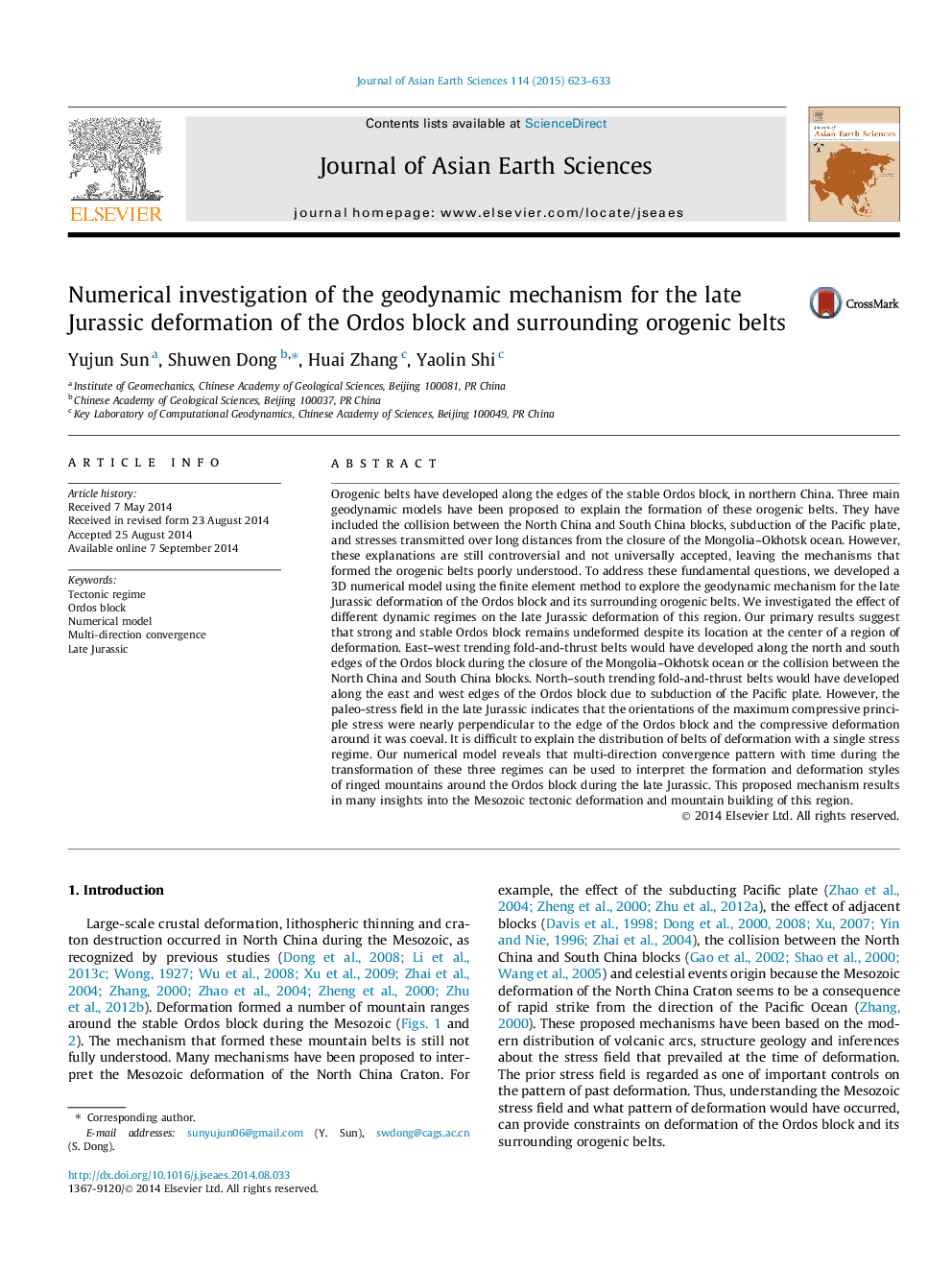| کد مقاله | کد نشریه | سال انتشار | مقاله انگلیسی | نسخه تمام متن |
|---|---|---|---|---|
| 4730083 | 1356735 | 2015 | 11 صفحه PDF | دانلود رایگان |

• The effect of different regimes on the deformation of the Ordos are discussed.
• The mountains developed around the Ordos due to the multi-direction convergence.
• The multi-direction convergence occurred in the Eastern Asia during the late Jurassic.
Orogenic belts have developed along the edges of the stable Ordos block, in northern China. Three main geodynamic models have been proposed to explain the formation of these orogenic belts. They have included the collision between the North China and South China blocks, subduction of the Pacific plate, and stresses transmitted over long distances from the closure of the Mongolia–Okhotsk ocean. However, these explanations are still controversial and not universally accepted, leaving the mechanisms that formed the orogenic belts poorly understood. To address these fundamental questions, we developed a 3D numerical model using the finite element method to explore the geodynamic mechanism for the late Jurassic deformation of the Ordos block and its surrounding orogenic belts. We investigated the effect of different dynamic regimes on the late Jurassic deformation of this region. Our primary results suggest that strong and stable Ordos block remains undeformed despite its location at the center of a region of deformation. East–west trending fold-and-thrust belts would have developed along the north and south edges of the Ordos block during the closure of the Mongolia–Okhotsk ocean or the collision between the North China and South China blocks. North–south trending fold-and-thrust belts would have developed along the east and west edges of the Ordos block due to subduction of the Pacific plate. However, the paleo-stress field in the late Jurassic indicates that the orientations of the maximum compressive principle stress were nearly perpendicular to the edge of the Ordos block and the compressive deformation around it was coeval. It is difficult to explain the distribution of belts of deformation with a single stress regime. Our numerical model reveals that multi-direction convergence pattern with time during the transformation of these three regimes can be used to interpret the formation and deformation styles of ringed mountains around the Ordos block during the late Jurassic. This proposed mechanism results in many insights into the Mesozoic tectonic deformation and mountain building of this region.
Journal: Journal of Asian Earth Sciences - Volume 114, Part 4, 15 December 2015, Pages 623–633